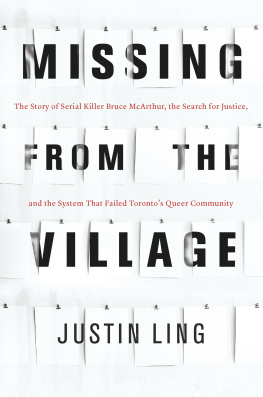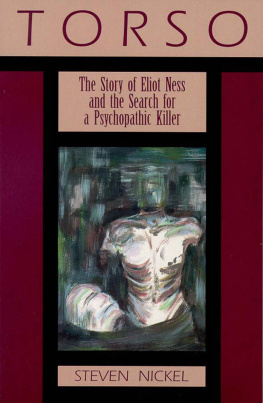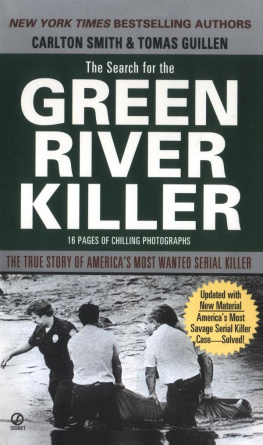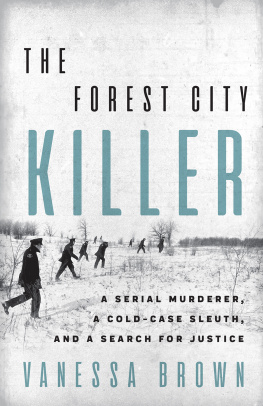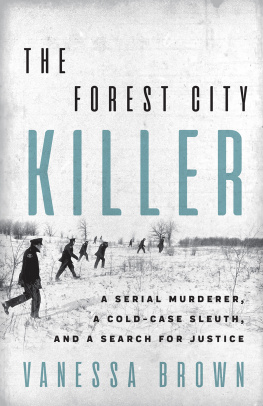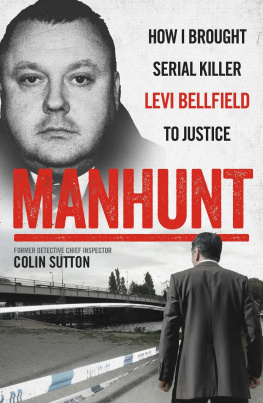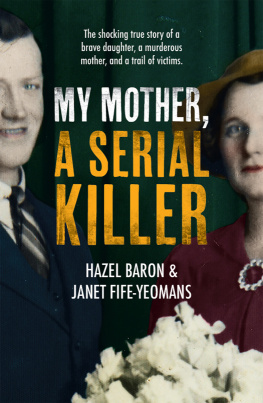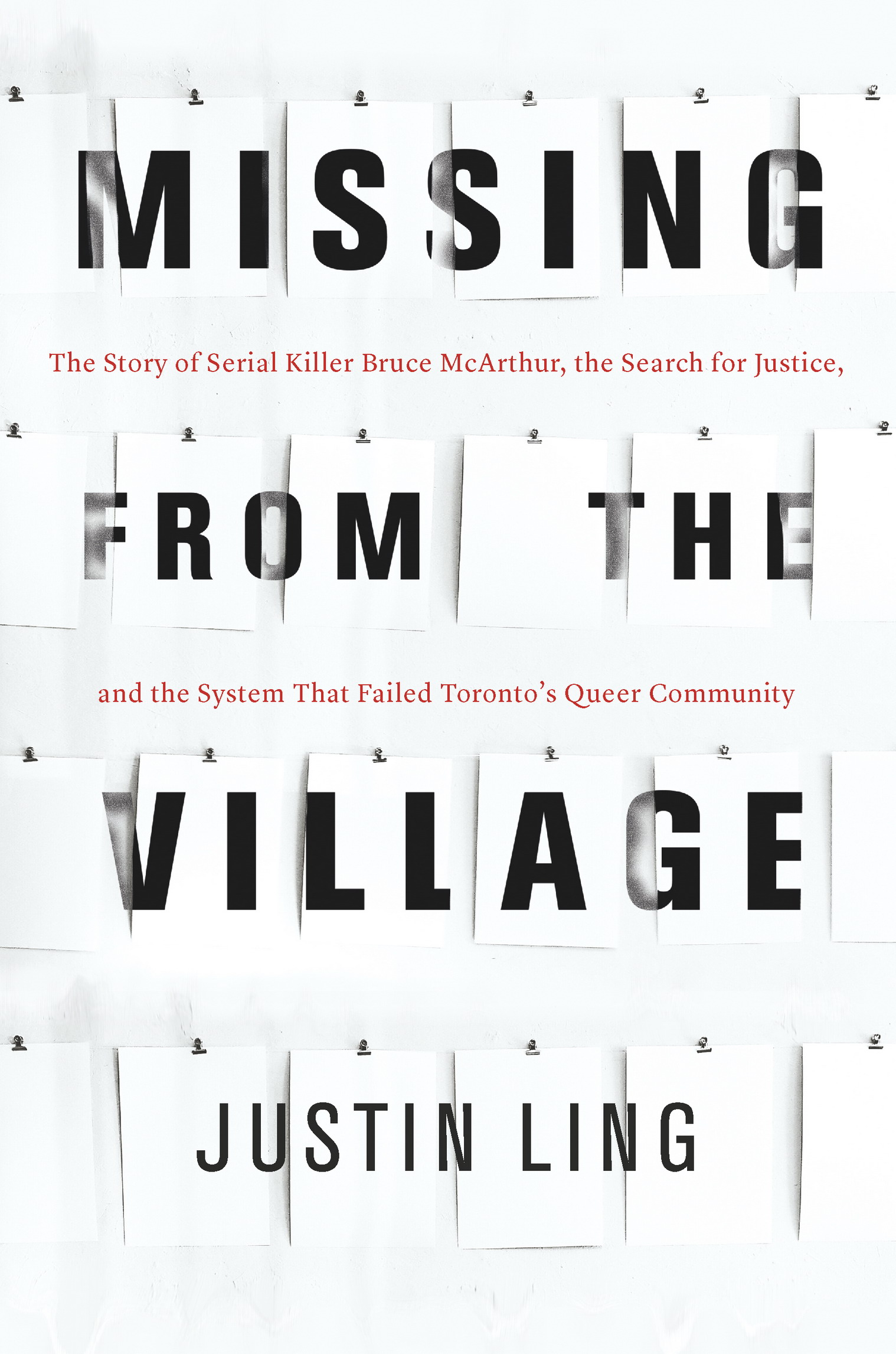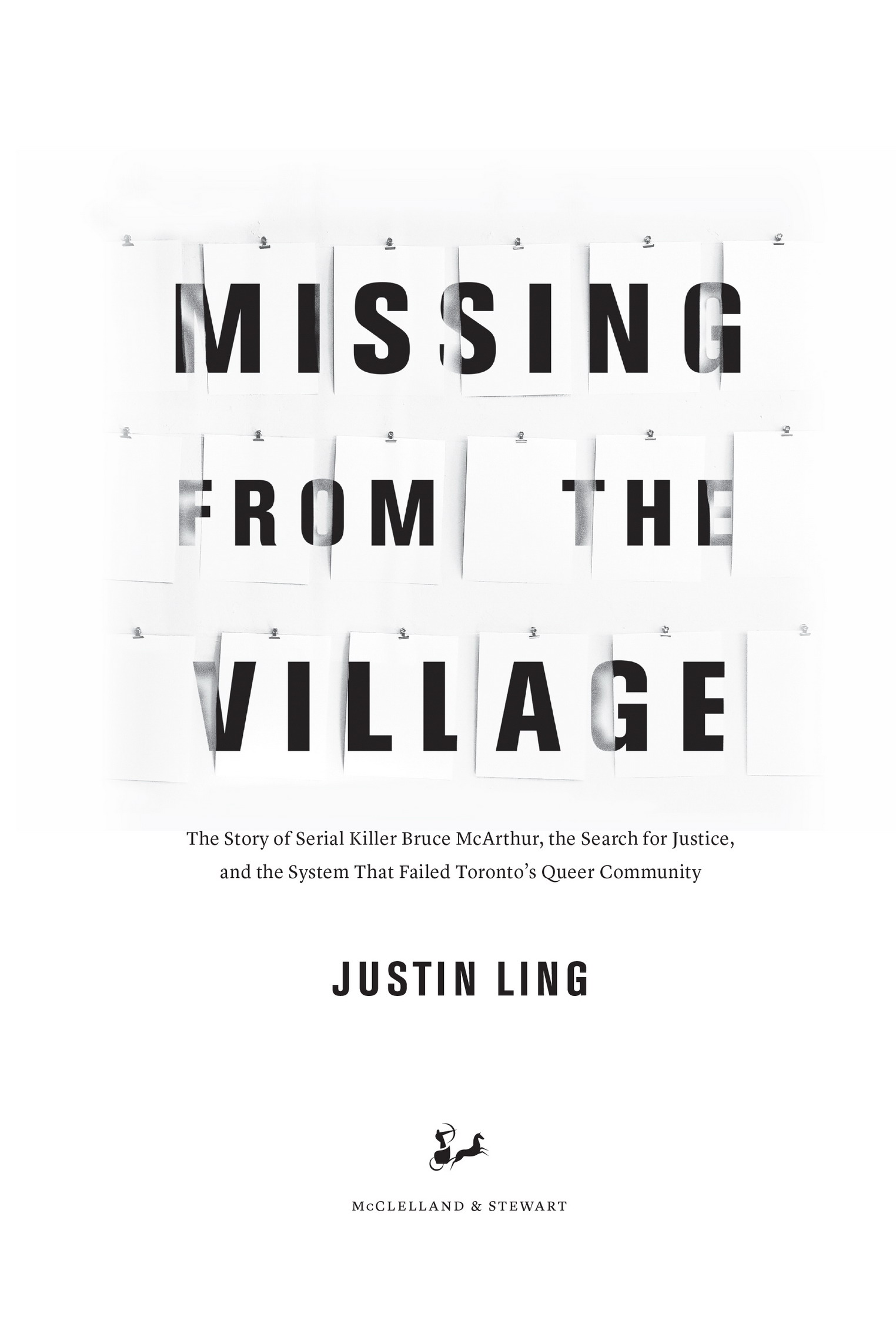McClelland & Stewart and colophon are registered trademarks of Penguin Random House Canada Limited.
All rights reserved. The use of any part of this publication reproduced, transmitted in any form or by any means, electronic, mechanical, photocopying, recording, or otherwise, or stored in a retrieval system, without the prior written consent of the publisheror, in case of photocopying or other reprographic copying, a licence from the Canadian Copyright Licensing Agencyis an infringement of the copyright law.
Names: Ling, Justin, author.
Identifiers: Canadiana (print) 20200197045 | Canadiana (ebook) 20200197061 | ISBN 9780771048647 (hardcover) | ISBN 9780771048654 (EPUB)
Subjects: LCSH: McArthur, Bruce, 1951- | LCSH: Serial murdersOntarioToronto. | LCSH: Serial murder investigationOntarioToronto. | LCSH: GaysOntarioTorontoSocial conditions.
AUTHORS NOTE
THERE are two words I use in this book that may be controversial.
The first is the word queer. While, once, it was exclusively a slur, the word has been reappropriated to serve a very important function. As the acronym used to represent the broader spectrum of sexuality has expanded, from the simple LGBT to the more complicated LGBTQIA2+ (Lesbian, Gay, Bisexual, Trans, Queer, Questioning, Intersex, Asexual, Two-Spirit, and everything else), many have, rightly, pointed to how fraught it can be to encapsulate the incredibly diverse range of non-heterosexual and non-cisgender identities in a handful of letters. It feels that, no matter how many letters are added, entire parts of that spectrum are captured under broad catch-alls, like trans; or must otherwise be happy being relegated to the plus-sign. I have opted to simply use the word queer to represent every point along that spectrum. There are drawbacks in trying to use a single word, much less a word that once went hand-in-hand with discrimination and violence. There is beauty in that, too. As a word we have reclaimed, we can define it as widely and expansively as we choose. A word that used to mean exclusion can be inverted to be inclusive.
The second word that will appear throughout this book, perhaps to some chagrin, is community. There is a very good argument to be made that, even if there are communities of queer people, there is no queer community. I think this book is both evidence of what a broader queer community looks like, and where exactly that lack of community is so painfully evident. To that end, the use of those two words togetherqueer communitymay be more aspirational than actual. A community is not a utopia, but it should be a space where outside prejudices are unwelcome, and where solidarity is a default. Unfortunately, that is not yet a reality.
This book sits at an uneasy crossroads of these problems. I am a journalist, and I am a member of that community. This book is not an academic work, it is not an activist manifesto, nor is it a true crime book which spectates from afar. This book is an investigation of a tragedy of enormous proportions, which works to explain why it happened, and to learn lessons on how to stop it from happening again.
There is blame to go around in this story. But there is credit to be given, too.
This book is dedicated to the friends and family of the men who went missing from Torontos Village, for whom this tragedy has been a daily reality for years. I have tried to tell their story as honestly, accurately, and empathetically as possible, and can only hope that this book doesnt compound the pain. Many have, over the years, chosen to speak to me and continue reliving that trauma, sometimes at great personal expense, and I hope this book does that sacrifice justice. I specifically want to thank Meaghan Marian, who is both a key figure in this story and was instrumental in helping me navigate how to report this story properly. To her, and all the families, biological and chosen, Im eternally grateful.
I also want to dedicate it to the investigators who worked these cases. The system of policing itself is desperately in need of repair, and we shouldnt blink in the face of that challenge. While it is critical we hold the police, as an institution, accountable for the failures that led to this story, it is also important we recognize the hard work and dedication of the officers assigned to these cases. Figuring out how to untangle the complicated relationship between queer people and the police, and indeed how we improve policing more broadly, involves recognizing where police get it right. In my years of working on this story, I have found a real desire on the part of those officers to engage in critical self-reflection. So while this book is dedicated to the officers and investigators, I also hope it sparks more introspection about their relationship with the queer community.
And, finally, this book is dedicated to the queer community itself. A community which has been ridiculed, gaslighted, surveilled, targeted, and killed. It has been marginalized by police, government, and society at large. But, through it all, it has survived with a culture and community that exists despite attempts to extinguish its uniqueness, and in spite of those attempts.
CONTENTS
PROLOGUE
AT the foot of Torontos Gay Village is a bronze statue of a tall, thin man, facing east but looking south. His ankle-length coat appears to be billowing in a gust of wind. His right hand grips his hat and gloves, and his left a walking stick. In his lapel is a rose. The statue is covered in a green patina, giving the young monument an artificial age. It stands on the corner of Alexander and Church streets. A block south is Wood Street. At times the man has been clad in colourful bandanas and rainbow bouquets. Other times hes stood below balloon banners.
A plaque sits at his feet. It reads: Alexander Wood, 17721844. Militia Officer, Businessman, Public Servant, Justice of the Peace, Gay Pioneer. Theres a bit of a longer biography, but one line sticks out: He was involved in a homophobic scandal in 1810 and fled to Scotland.
You have to do some research to learn Woods whole story. Its a wild onean early entry in how law enforcement and homosexuality interacted.
Born a Scot, Wood travelled to the new world at the end of the eighteenth century, settling in the city of York, later known as Toronto. A noted bachelor but well-reputed merchant and magistrate, Wood occupied the early colonial role as both investigator and judge. In 1810, he brought a worrying story to the court. A Miss Bailey had been sexually assaulted. She couldnt identify her assailant, but she had, however, wounded her attacker in the struggle. She had scratched his penis.

